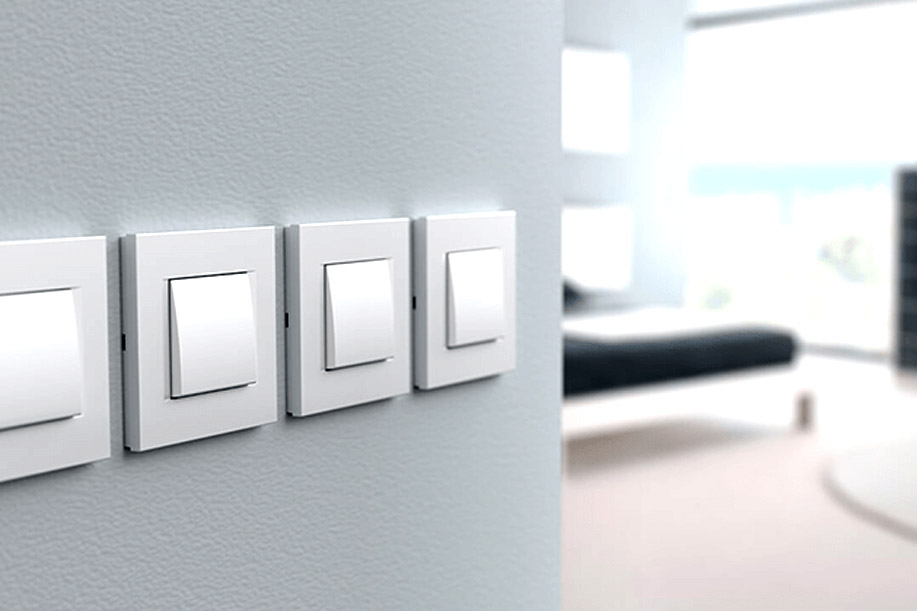The switch is an electronic device present both in any home and in the huge majority of electrical installation.
Its main function is to enable/disable the passage of electricity from the source to the desired object.
But which are the necessary steps to connect it perfectly? This guide will explain all of them.
Switch Types
Before proceeding with the connection of a switch, it is essential to understand which type is required according to ones needs.
There are mainly two types of switches:
- unipolar switches: in unipolar switches the flow of electricity is cut off by a single pole, i.e. the phase pole. There are no identifying marks on these switches.
- bipolar switches: with these devices the flow of electricity reaches both poles, i.e. the neutral and the phase.
Thanks to this, both the switches and the sockets are safe and avoid failures responsible for fires in the electrical panels.
Bipolar switches can be recognized by the presence of two marks, 0 and 1, which have the task of indicating precisely when they are crossed by the flow of electricity and when they are cut off.
Note: Prices of switches can vary depending on the purchased brand and type.
Magnetothermic switch
In addition to unipolar and bipolar switches, the magnetothermic one is also available, which counteracts dangerous current overloads, which can occur in the event of malfunctioning devices or during a short circuit.
The magnetothermic switch is a real lifesaver; for this reason, its presence is compulsory in any electrical panel.
Also this type of switch can be either unipolar or bipolar.
How to connect a switch: all steps
Now that the different types of switches have been specified, it is time to explain all the steps required for their correct connection as well as the necessary equipment.
Equipment required:
- Insulated screwdrivers;
- a pair of scissors to strip the wires.
Procedure:
- Disconnect the inertial and magnetothermic switches to interrupt the inlet electric circuit
This step must be carried out for any type of switch, bipolar or unipolar.
Note: Domestic electric currents flow on a sheathed cable consisting of three copper wires, also covered by sheaths: earth, phase and neutral ones.
- Remove the decorative plate as well as the front of the electrical socket on which the work is to be done and set aside.
- Insert the switch inside the housing and start stripping the wires with the scissors.
This operation is necessary to get the copper out of these wires, but attention must be paid not to damage the inner cable insulation.
A crimping tool can be used to avoid this inconvenience.
It is also essential to know the respective colors of the cables: the phase wire is usually grey, brown or black, the earth wire is green or yellow, while the neutral wire is blue.
- Locate the neutral and phase wires to connect them to the top of the switch.
- Insert the wires coming from the appliance into the lower part of the switch, being sure to position the neutral and the earth ones in the same way as those connected in the upper part (see point 4).
- Insert the wires into the terminals and close them with the insulated screwdriver.
- When the operation is complete, insert the decorative plate and reconnect all the switches and sockets previously disconnected.
- Relocate the socket inside the wall.
- Check the correct functioning of the switch by reactivating the magnetothermic one and the current flow.
This procedure is very simple and can be applied to any type of switch.
Of course, since you will be dealing with electricity, you should take the necessary precautions not to cause damage to both property and people.

